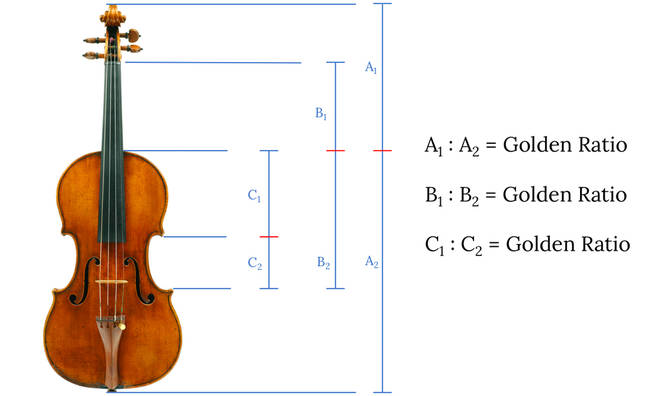Application of the Golden Ratio in Music
The golden ratio has many applications, it can be found in nature, the perception of beauty, the arts, architecture, and much more. For the purpose of investigating the application of the golden ratio, this section will focus on music. The golden ratio, whether by accident or with intent, found its way into music. Fibonacci numbers and the golden ratio show up in musical compositions. While there is arguments on whether or not composers intentionally used the golden ratio and Fibonacci numbers in their pieces, their perceived existence does go along with the idea that humans are naturally drawn to such numbers and patterns.
Dr. Roy Howat claims that Debussy masterfully used the golden ratio to compose some of his famous works. However, there isn’t demonstrative proof that Debussy knew of the ratios existence (David Bruce Composer). Howat claims that a piece of music’s proportional balance might not be instinctively noticed, but the lack of well-structured balance would be immediately noticeable (Howat, 1). There have been discussions that Bartok applied the golden ratio in his piece Music for Strings, Percussion, and Celesta. Chopin’s Prelude in C is a piece that fascinatingly has proportions that consist with Fibonacci numbers and also has the climax at the golden mean, but again there isn’t concrete evidence that Chopin knew anything about these important numbers and proportions (David Bruce Composer).
Gend’s paper even goes far enough to say that when listening to a piece that consists of notes that are Fibonacci numbers, a note that is not a Fibonacci number sounds out of place and unnatural (Van Gend). Gend’s paper includes a piece that was composed intentionally with Fibonacci numbers in mind and has one note that isn’t a Fibonacci number. To some ears, that note doesn’t sound quite right with the entire piece because it is surrounded by Fibonacci numbers. However, it is really up to the audience’s opinion on whether or not that note sounds right in the piece.
The Stradivarius violins are famous for their tonal quality and sought after even today. The design of the violin displays use of the golden section (Meisner). While the ratios of the sections of each violin might not perfectly match the ratio of 1.618, Antonio Stradivari designed his violins in such a way to fit the ratio as much as possible. Although this can also lead to the argument on what is close enough to the irrational ratio to be considered definitely using it.


